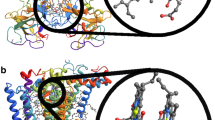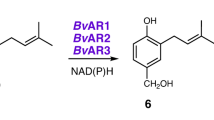Abstract
THE fundamental idea in a highly speculative new kind of muscle model1 was that a bond vibration is first produced by an exothermic chemical reaction, the energy is transferred resonantly to an electronic excited state of identical frequency, then trapped in an excimer state formed between two such electronic oscillators and finally converted into external work as the two oscillators approach each other. The first part of Naqvi's criticism2 was that the experiment I quoted as an example of energy trapping in excimers was mistaken. This I concede; clearly the pyrene experiments can no longer be used to show that excimer fluorescence is dipole-forbidden. The accepted theory clearly predicts, however, that, in special conditions, the excimer state may yet be long lived. In its longer version3 my muscle model already has a design feature which enables Naqvi's criticism to be overcome. If the oscillator was indeed first excited to a singlet state and only later diffused into interaction distance with another oscillator in the ground state then, as Naqvi argues, the triplet state would be at a lower energy and decay into it would be difficult to avoid. My suggestion3 was, however, that the energy of the bond vibration produced on ATP hydrolysis is less than that of the excited state of an isolated oscillator, so that only when the two oscillators are close enough to perturb each other sufficiently do they resonate with the bond vibration and then become excited. This feature was introduced, first, to protect the postulated bond vibration (by allowing it to be buried in a protein and yet to interact with the environment in this way) and, second, to ensure that only the anti-symmetric attractive excimer state is produced on excitation. I now suggest a third function: to ensure that the excimer only becomes excited when its energy is already below that of the triplet state. In this case decay into the triplet state would be prevented, and the fluorescence would become fully dipole-forbidden.
This is a preview of subscription content, access via your institution
Access options
Subscribe to this journal
Receive 51 print issues and online access
$199.00 per year
only $3.90 per issue
Buy this article
- Purchase on SpringerLink
- Instant access to full article PDF
Prices may be subject to local taxes which are calculated during checkout
Similar content being viewed by others
References
McClare, C. W. F., Nature, 240, 88 (1972).
Razi Naqvi, K., Nature, 242, 473 (1973).
McClare, C. W. F., J. theor. Biol., 35, 569 (1972).
Banks, B. E. C., Callomon, J. H., and Vernon, C. A., Nature 242, 473 (1973).
Stretton, J. L., in Transfer and Storage of Energy by Molecules (edit. by Burnett, G. M., and North, A. M.), 2, chaps 1 and 2 (Wiley Interscience, London, 1969).
Schwartz, R. N., Slawsky, Z. L., and Herzfeld, K. F., J. chem. Phys., 20, 1591 (1952).
Doonan, S., Vernon, C. A., and Banks, B. E. C., Prog. Biophys. molec. Biol., 20, 247 (1970).
McClare, C. W. F., J. theor. Biol., 30, 1 (1971).
Popper, K. R., Brit. J. Phil. Sci., 8, 151 (1957).
McClare, C. W. F., J. theor. Biol., 35, 233 (1972).
Author information
Authors and Affiliations
Rights and permissions
About this article
Cite this article
McCLARE, C. Reply to Criticisms of a Quantum-Mechanical Muscle Model. Nature 245, 392 (1973). https://doi.org/10.1038/245392a0
Received:
Issue date:
DOI: https://doi.org/10.1038/245392a0



